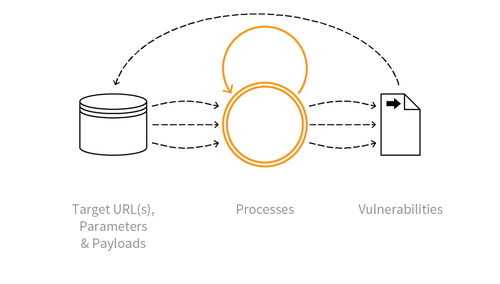This site is the archived OWASP Foundation Wiki and is no longer accepting Account Requests.
To view the new OWASP Foundation website, please visit https://owasp.org
Difference between revisions of "OAT-014 Vulnerability Scanning"
(New page) |
(→Indicative Diagram) |
||
| Line 19: | Line 19: | ||
===Indicative Diagram=== | ===Indicative Diagram=== | ||
| − | + | [[File:OAT-014_Vulnerability_Scanning.png|500px|link=]] | |
=== Description === | === Description === | ||
Latest revision as of 15:11, 16 February 2018
This is an automated threat. To view all automated threats, please see the Automated Threat Category page. The OWASP Automated Threat Handbook - Wed Applications (pdf, print), an output of the OWASP Automated Threats to Web Applications Project, provides a fuller guide to each threat, detection methods and countermeasures. The threat identification chart helps to correctly identify the automated threat.
Definition
OWASP Automated Threat (OAT) Identity Number
OAT-014
Threat Event Name
Vulnerability Scanning
Summary Defining Characteristics
Crawl and fuzz application to identify weaknesses and possible vulnerabilities.
Indicative Diagram

Description
Systematic enumeration and examination of identifiable, guessable and unknown content locations, paths, file names, parameters, in order to find weaknesses and points where a security vulnerability might exist. Vulnerability Scanning includes both malicious scanning and friendly scanning by an authorised vulnerability scanning engine. It differs from OAT-011 Scraping in that its aim is to identify potential vulnerabilities.
The exploitation of individual vulnerabilities is not included in the scope of this ontology, but this process of scanning, along with OAT-018 Footprinting, OAT-004 Fingerprinting and OAT-011 Scraping often form part of application penetration testing.
Other Names and Examples
Active/Passive scanning; Application-specific vulnerability discovery; Identifying vulnerable content management systems (CMS) and CMS components; Known vulnerability scanning; Malicious crawling; Vulnerability reconnaissance
See Also
Cross-References
CAPEC Category / Attack Pattern IDs
- -
CWE Base / Class / Variant IDs
- 799 Improper Control of Interaction Frequency
WASC Threat IDs
- 21 Insufficient Anti-Automation
OWASP Attack Category / Attack IDs
- -